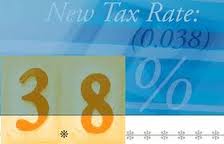To file Form 944, Employer’s Annual Federal Tax Return, you must be notified by the IRS that you are eligible to file Form 944. If you estimate that your annual payroll tax liability for 2012 will be $1,000 or less and would like to file Form 944 instead of quarterly Forms 941, now is the time to contact the IRS to request to file Form 944.
To File Form 944 for calendar year 2012, you must call the IRS at 1-800-829-4933 by April 2, 2012, or send a written request postmarked by March 15, 2012. The IRS will send you a written notice that your filing requirement has been changed to Form 944. If you do not receive this notice, you must file quarterly Forms 941 for calendar year 2012.
New employers are also eligible to file Form 944 if they will meet the eligibility requirements. New employers filing Form SS-4, Application for Employer Identification Number, must complete line 13 of Form SS-4 indicating the highest number of employees expected in the next 12 months and must check the box on line 14 to indicate whether they expect to have $1,000 or less in employment tax liability for the calendar year and would like to file Form 944.
Generally, if you pay $4,000 or less in wages subject to social security and Medicare taxes and federal income tax withholding, you are likely to pay $1,000 or less in employment taxes. New employers are advised of their employment tax filing requirement when they are issued their EIN.
Written requests to file Form 944 should be sent to: Department of Treasury, Internal Revenue Service, Ogden, UT 84201-0038 or Department of Treasury, Internal Revenue Service, Cincinnati, OH 45999-0038.



